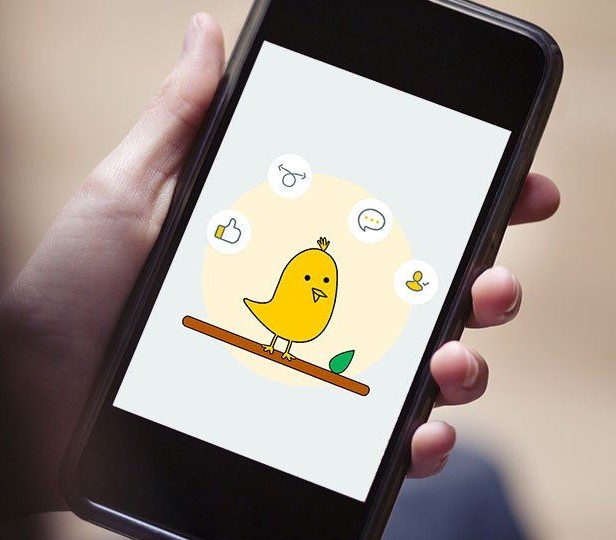(ATF) As the spat with US social media platform Twitter continues, pushing the Modi government to step up its scrutiny of social media platforms, Indian businesses are tightening their purse strings on ad-spends fearing a clamp-down on their digital campaigns.
“There are clear signals that government wants to actively filter the information floating around on social media,” Chetan Deshpande, a digital profit consultant, told Asia Times Financial.
“However, as an extension of this, entities that are managing these channels are also getting scrutinised and monitored closely, which is making businesses very careful about advertising on this platform. Many advertisers are trying the ascertain the risks that messages through advertisements on social media may carry and that has slowed down social media advertising campaigns considerably,”
Read more: Bitcoin tests $50,000 as Musk plays with altcoin
He added, on top of the row between Twitter and the Indian government, social media is increasingly attracting government scrutiny due to three main reasons. One, the proliferation of fake news; two, the emergence of the social media into the mainstream; and finally, the increasing dependence of other forms of media (like newspapers and TV channels) on social media channels for sourcing information.
“More people turn to social media channels for news, views and opinions than ever before making this platform more powerful than all other media channels. Consequently, like everywhere else in the world, the Indian Government too has felt the urgency to filter social media contents, which is why we see the growing scrutiny and the resultant clashes with the government which is trying to filter irresponsible information,” Deshpande said.
Twitter had come under the Modi government’s lens late last month when India ordered Twitter to remove more than 1,100 accounts and posts that it alleged were spreading misinformation about farmers protesting against new agricultural reforms.
ACCOUNTS SUSPENDED
Twitter said that it had permanently suspended more than 500 accounts for violation of Twitter’s rules, in accordance with the government’s orders, but it also unblocked 250 accounts that used a controversial hashtag referring to Modi and farmer genocide.
Claiming that those accounts belonged to news media, journalists, activists and politicians, Twitter reasoned that banning those accounts “would violate their fundamental right to free expression under Indian law”.
That sparked off a spat between the Indian government and Twitter with many contending that the social media giant’s content regulation policies remain arbitrary and ad hoc.
And, although Twitter subsequently blocked most of the accounts, as asked by the government, experts say, given the problem of misinformation and fake news, governance and regulation in social media is the need of the hour.
MEDIA CHALLENGE
“In the garb of taking a message to the public, there has been a lot of unwanted and unprovoked content in the social media and that is a challenge for India,” Amit Tripathi, managing director at IdeateLabs, an independent digital-first agency, told ATF.
“It is the responsibility of the media houses as well as the government to put a lid on the practice of passing on unwanted and unverified information in the social media channels. I think there is going to be a lot of disciplining coming from the government. With laws and compliance norms, sanity will prevail and as a responsible citizen I would welcome those changes,” he said.
And, as the government tries to enforce media channels to publish only what they can validate, ad campaigners are also getting shaky.
“With the government insisting that social media channels are accountable for the messages they convey, a number of brands are weighing their social media policies closely since post-lockdown a significant portion of investments in media has moved to social media channels and advertisement budgets are going to online channels first,” says Deshpande.
RAPID CHANGE
According to Dentsu Aegis Network, media and advertising is going digital at a rapid speed – 2020 emerged as the year for digital advertising with social media accounting for 28% of the estimated $2.5 billion digital advertising pie.
“This year social media was forecasted to attract at least four times that number,” says Deshpande.
However, according to Tripathi, unlike Facebook and Google, Twitter a gets small share – an estimated 5% against the 75% that Google and Facebook corner – of India’s advertising budgets.
Last week, Twitter reporting a 28% jump in global revenue at $1.29 billion for the fourth quarter ended December.
“Ad-spenders haven’t been pulling out of Twitter yet, but the slowdown in decision making in any new campaign is going to affect their budget in the next quarter,” said Tripathi.
KOO’S RISE
Meanwhile, miffed by Twitter’s ‘arrogance’, a new microblogging app with the logo of a little yellow chick called Koo is gaining government departments’ preference as the primary port of communication with the public, said reports.
While the Ministry of Electronics and IT (MeitY), the Union Ministry of Railways and some other government departments have already officially set up accounts on the application, important updates, notifications and announcements will be shared 1-3 hours before on Koo and then on Twitter, according to reports.
Besides, with rival apps such as ‘Ban Twitter India’, ‘Ban Twitter’, ‘Twitter hypocrisy’ and ‘BJP Govt Dictating Twitter’ gaining prominence in India, for every Twitter there’s a Koo waiting in the wings to grab a slice of the sector’s digital ad-budget, say experts.
Koo, which has startling similarities with Twitter, now has over three million users, according to its co-founder Mayank Bidawataka.
In contrast, Twitter has 17.5 million users and is used by the Prime Minister Narendra Modi and many of his ministers to communicate with the public.
Also on ATF:
US FTC order lumps TikTok in with Amazon, Facebook and Google
Call for social media oversight in India after Facebook exec quits
























